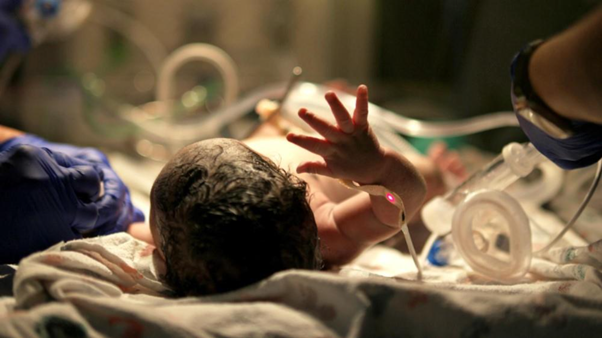Understanding CDH in infants can be crucial for new parents. Congenital Diaphragmatic Hernia (CDH) is when a baby is born with a hole in the diaphragm. This hole allows organs like the stomach and liver to move into the chest. This condition can seriously affect how an infant’s lungs develop.
CDH starts early in pregnancy. The main problem is how the lungs grow. With other organs taking up space, the lungs don’t have room to develop properly. This type of birth defect leads to breathing problems.
Early diagnosis is key. Doctors usually spot this condition before birth. Treating CDH early can help manage symptoms and improve outcomes.
Parents should be ready for symptoms. Newborns might show severe breathing difficulties right away. The infant’s chest might also look unusual. Congenital diaphragmatic hernia symptoms need quick attention because timely medical help is crucial.
Knowing about CDH helps parents make informed choices. They can decide the best treatment path for their child’s health. Understanding CDH in infants involves recognizing early signs and symptoms. This knowledge allows better care and more hopeful outcomes.
Understanding the Impact of CDH: Symptoms and Diagnosis
Recognizing congenital diaphragmatic hernia symptoms early can make a difference. Indicators show right after birth, like bluish skin, rapid breathing, and unusual chest movements. If parents notice these signs, it’s essential to seek medical help quickly.
Diagnosis can happen before or shortly after birth. Doctors use imaging techniques, like prenatal ultrasounds. Once born, doctors might use X-rays to look for CDH.
Diagnosing CDH early is beneficial. Early detection helps in planning treatments. It ensures the baby gets the right care as soon as possible.
Identifying and diagnosing these symptoms helps anticipate complications. These may include issues with developing lungs, the heart, or even the digestive system. Understanding CDH in infants means being aware of these linked concerns.
Early diagnosis, therefore, leads to better planning. It enables quicker interventions to aid affected infants. This proactive approach can improve an infant’s chance to live a healthier life.
CDH Treatment Options and Long-term Prognosis
When it comes to CDH treatment options for infants, quick action is vital. Infants often require special care right after birth. This usually means admission to an intensive care unit.
- Immediate Care: Right after birth, babies might need respiratory support.
- Surgery: Often, surgery is done to reposition organs and fix the diaphragm.
- Ongoing Support: Babies may require therapies to assist breathing, feeding, and development. Doctors provide medications to ease symptoms.
The CDH long term prognosis can be varied. It mainly depends on how the lungs develop and if any other conditions exist. With effective treatment, many infants see substantial health improvements.
Doctors and parents work together to manage the condition. With comprehensive treatment plans, affected infants receive the best possible care.
Understanding CDH in infants means knowing the available treatments and their outcomes. With knowledge and early action, families can expect better health results for their infant.
Coping with a CDH Diagnosis: Support and Resources for Families
Families facing a CDH diagnosis need support. Dealing with such news can feel overwhelming. Support systems play a big role in helping families cope.
Building a network of support can help ease the journey: – Join Support Groups: Connecting with others facing the same situation helps share experiences. – Explore Resources: Online and local resources in India offer guidance. CDH babies stories shared in forums provide insight and comfort. – Seek Financial Help: CDH treatment can be costly. Investigating financial assistance options may lessen the burden.
A robust support system means stronger mental well-being. Families can handle the emotional challenges better when they connect with a community that understands.
It is also important to raise CDH awareness and advocacy. When people know more about CDH, they’ll understand the family’s experiences better. This advocacy can lead to more support for affected families.
In short, coping with CDH diagnosis involves understanding, seeking help, and connecting with other families. This allows parents to focus more on their child’s health and well-being. Managing stress helps them become strong advocates for their children.

